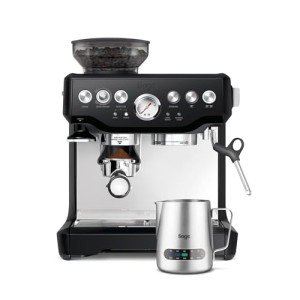Bean To Cup Espresso Coffee Machine: The Ultimate Guide
Over the last few years, the coffee culture has experienced a significant improvement, with the increase of home developing gadgets offering benefit and quality similar to café offerings. Amongst these devices, the Bean to Cup Espresso Coffee Machine stands out as a preferred amongst coffee connoisseurs and casual drinkers alike. This thorough guide explores what these machines are, how they function, the benefits they offer, and elements to think about when picking the right one.
What is a Bean to Cup Espresso Coffee Machine?
A Bean to Cup Espresso Coffee Machine is an advanced coffee developing device that grinds coffee beans fresh for each cup, automating the whole espresso-making procedure. Best Bean To Cup Coffee Machines feature integrated mills, integrated milk frothers, and exact brewing technology, enabling users to develop high-quality espressos, lattes, coffees, and more, all from the comfort of their homes. The benefit, coupled with the rich and robust flavors produced, has made these machines progressively popular.
How Does It Work?
The basic operation of a Bean to Cup Espresso Coffee Machine can be broken down into numerous crucial steps:
Bean Grinding
- The machine grinds whole coffee beans immediately before developing, ensuring maximum freshness and taste retention.
Brewing
- Ground coffee is packed into a filter, and warm water is forced through the coffee grounds at high pressure, which is important for developing espresso.
Frothing (Optional)
- Many designs consist of a steam wand or milk frother for preparing frothed milk for lattes and coffees.
Serving
- The last involves dispensing the brewed coffee into a cup, often with programmable functions for customization.
Benefits of Bean to Cup Espresso Machines
Investing in a Bean to Cup Espresso Coffee Machine uses various benefits, adding to its growing popularity.
| Benefit | Description |
|---|---|
| Convenience | One-touch operation reduces the time and effort required to prepare coffee. |
| Quality | Freshly ground beans result in a richer, more delicious drink compared to pre-ground options. |
| Modification | Users can change settings to match individual choices, consisting of grind size, coffee strength, and milk froth levels. |
| Affordable | Although the preliminary financial investment might be high, savings on coffee purchases from cafés can be substantial gradually. |
| Adaptability | The ability to brew different coffee types, from espresso to cappuccino, broadens the machine's appeal. |
Secret Features to Look For
When choosing a Bean to Cup Espresso Coffee Machine, various functions can affect the purchase choice. Below are essential elements to consider:
Grinder Type
- Burr grinders are chosen over blade grinders for their constant grind size.
Brewing Pressure
- Look for machines that provide a minimum of 15 bars of pressure for ideal espresso extraction.
Milk Frother
- Select between manual steam wands or automatic milk frothers based on preferences for milk texture and foam.
User Interface
- An user-friendly control panel with programmable settings boosts the general experience.
Size and Design
- Consider the counter top space readily available and pick a style that complements your kitchen area aesthetic appeals.
Maintenance Options
- Some machines offer automatic cleaning cycles, which can save time and effort in upkeep.
Popular Bean to Cup Espresso Machines
Selecting a machine that fits one's needs can be challenging. Below is a list of popular models, understood for their dependability and efficiency.
| Design | Secret Features | Rate Range |
|---|---|---|
| De'Longhi Magnifica ESAM3300 | Adjustable coffee strength, compact design | ₤ 550 - ₤ 700 |
| Breville Barista Touch | Touchscreen controls, incorporated conical burr grinder | ₤ 800 - ₤ 1,150 |
| Saeco PicoBaristo | Automatic milk frother, 12 coffee specialties | ₤ 900 - ₤ 1,300 |
| Jura E8 | Pulse Extraction Process, Alexa Compatible | ₤ 1,800 - ₤ 2,500 |
| Gaggia Anima | Easy to clean up, programmable settings | ₤ 500 - ₤ 800 |
Maintenance Tips
Keeping a Bean to Cup Espresso Coffee Machine in good condition is necessary for ensuring durability and optimal performance. Here are some maintenance pointers:
- Regular Cleaning: Clean the machine's parts routinely, including the drip tray, coffee premises container, and water reservoir.
- Descaling: Perform descaling every couple of months based on water hardness and use to avoid mineral accumulation.
- Modification Water Filter: If the machine has a water purification system, alter the filter as advised.
- Examine Seals and Gaskets: Check for wear and tear to prevent leaks and make sure proper pressure throughout brewing.
FAQs
1. Are Bean to Cup Espresso Machines simple to use?Yes, the majority of models are created for user benefit with simple control panels and one-touch operation. 2. Can I utilize pre-ground coffee in these machines?While some machines permit making use of pre-ground coffee, the primary benefit depends on using whole beans for fresh grinding. 3. How frequently must Best Bean To Cup Coffee Machine clean my Bean to Cup machine?Regular maintenance is essential; daily cleansing of detachable parts and descaling every 2-3 months are usually suggested. 4. What is the average
life-span of a Bean to Cup Espresso Coffee Machine?With proper upkeep, these machines can last anywhere from 5 to 15 years based on use quality
. 5. Are these machines worth the investment?Though they can be pricey, the benefit, quality coffee production, and long-lasting savings make them a deserving investment for lots of coffee enthusiasts. Buying a Bean to Cup
Espresso Coffee Machine can considerably enhance the home
coffee experience. By offering freshly brewed, premium coffee, these machines cater to the growing demand for café-style drinks in the convenience of one's kitchen. With various choices on the market, understanding features and personal preferences will help in selecting the best machine to fit any coffee fan's requirements.

